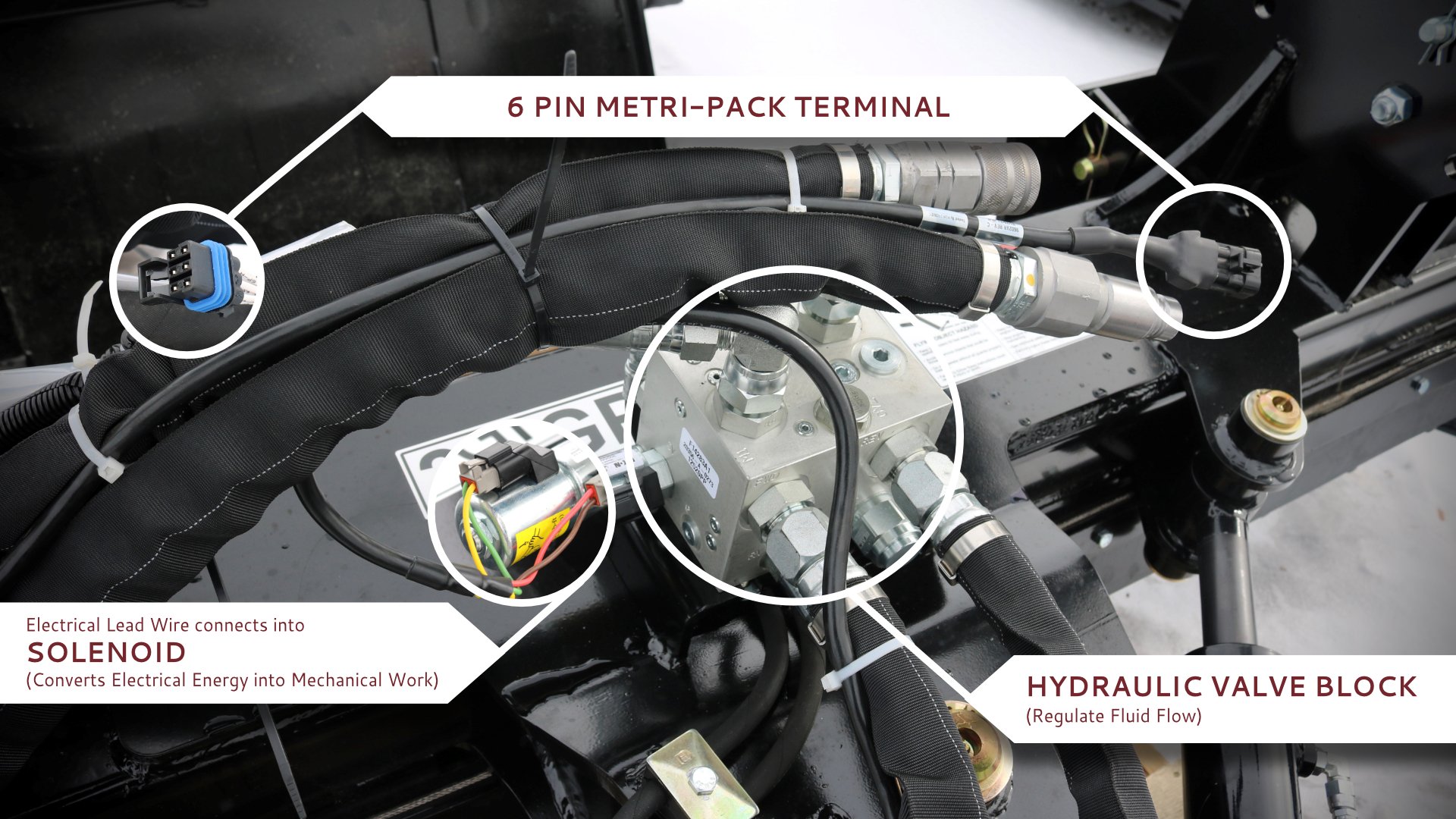As an operator, learning to master your electrical controls is essential to getting the job done with accuracy and efficiency. From selecting the proper grade to the configuration of your Hydraulic Snow Blade Pusher, knowing how to use the electrical controls of your equipment can save time and greatly reduce frustration.
The following instructions are applicable to joysticks or switch boxes used with our Angle Broom, Power Rake, Dozer Blade, Snow Blower, and Hydraulic Snow Blade Pusher attachments.
Understanding electrical auxiliary functions
The process varies depending on your loader and attachment, but the basic concept is always the same. For more details, reference the manual for your specific attachment.
When the electrical function is engaged, a signal is sent to a solenoid. The transmission will open a valve causing hydraulic fluid to activate a circuit that is separate from the main circuit.
Attachments without motors:
For attachments without motors like the Dozer Blade and Hydraulic Snow Blade Pusher, after engaging the electrical auxiliary circuit you will choose the direction of flow with the forward or reverse hydraulic detent.
attachments with Motors:
For attachments with motors like the Angle Broom and Power Rake, a continuous flow of electricity must be engaged in the correct direction. Flow can be diverted to separate functions with the 2-4 electrical circuits.
what to do if something isn't working
check connections
If your attachment isn't running suitably, check the machine fuses and plug. Then, follow the electrical wiring and check each connection for power and proper engagement with a multimeter or test light.
Examine solenoids
If the connections aren’t the issue, examine the solenoids by engaging each one individually. Listen for a clicking sound or put a screwdriver inside. The solenoids are electromagnetic, so, if the circuit is working, the screwdriver should stick.
Inspect stem valve
If the issue is still unresolved, visually inspect the stem valve under the solenoids. If the valve is bent or damaged, it may not open correctly.

safety Notes
Always wear PPE when working on your attachment. Be certain of the circuits you are testing as electrical damage can occur to the machine if you short the wires.
With a greater understanding of electrical auxiliary functions, you’re ready to safely operate your attachment. For more information about how to manage your Virnig equipment, look up the appropriate manual online.

